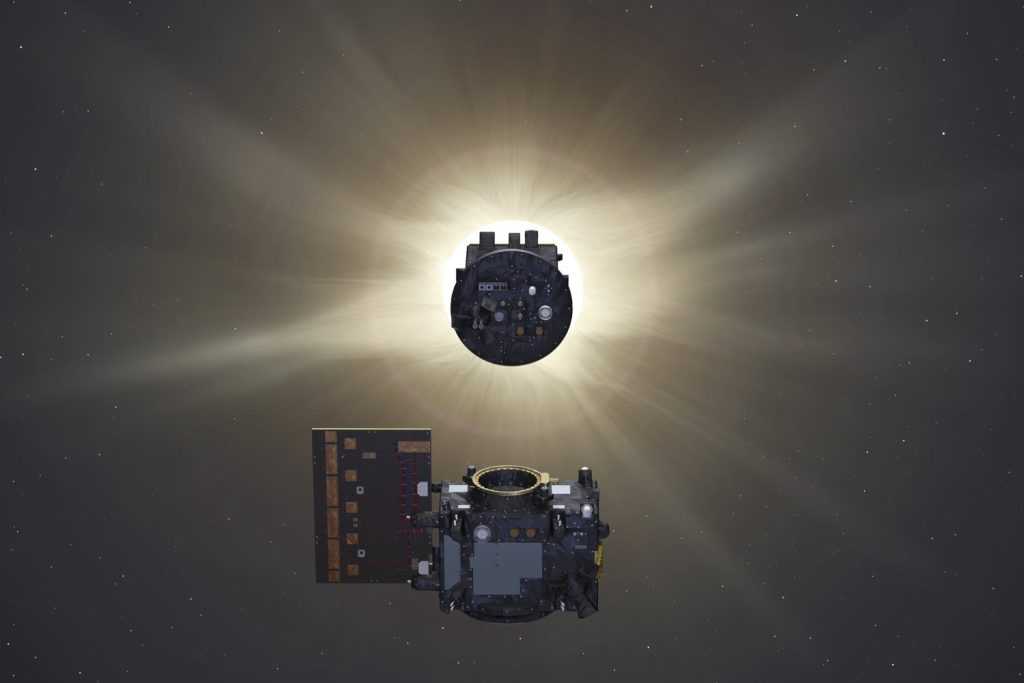The European Space Agency’s Proba-3 mission has achieved something no other mission—or synchronized swimmer—has before: autonomous, precision formation flying in space with millimeter accuracy.
ESA’s Proba-3 satellites—the Occulter and the Coronagraph, respectively—maintained a steady 492-foot (150-meter) distance from one another in a highly elliptical orbit, simulating a single massive instrument. The same principle is used by satellite constellations and planned space telescopes to capitalize on the laws of physics and the relatively noiseless environment of space to collect more data than otherwise possible. But Proba-3’s goal is unique: to align the spacecraft in such a way that one (the Occulter) can block out the Sun’s glare, while the other (the Coronagraph) can take a clean look at its wispy outer atmosphere—the solar corona.
For this to work, the two spacecraft can’t just drift around together—they must stay aligned with millimeter-level (0.04-inch) precision, with no micromanagement from Earth. Specifically, the instruments need to be aligned such that there’s nearly 500 feet (152.4 m) between them, and a 4.6-foot (1.4-m) disc on the Occulter casts a 2-inch (5-centimeter) shadow on the Coronagraph—that’s all the latter needs to be sheltered from the Sun’s brilliance and image its faint, ethereal corona.
After initial positioning by ground control, the satellite duo’s autonomous system of cameras, LEDs, and laser rangefinders brings the two spacecraft closer together, leveraging an algorithm to ensure that the Coronagraph stays safely in the Occulter’s shadow.

The Fine Lateral and Longitudinal Sensor (FLLS)—a laser system that detects position shifts—ensures the two spacecraft remain precisely aligned; constant measuring of laser light is the same technology that will keep LISA, the next-generation gravitational wave observatory from NASA and ESA, in alignment at much greater distances, 10 years from now.
Proba-3’s achievement marks a level of orbital choreography that’s never been accomplished before. “We are talking about millimetric accuracy in range, and sub-millimetric in the lateral position,” said project manager Damien Galano in an ESA release. “We can’t wait to see the completion of the instrument calibration and the first processed image of the Sun’s corona.”
The solar science will be a remarkable feat in itself, but Proba-3’s technology demonstration also helps prove out the precision measurements that will be crucial for future multi-spacecraft missions, such as LISA.
It’s marvelously precise science that sets the stage for astronomy’s future. For now, ESA’s Proba-3 will prepare for its research campaign—tethered by lasers in a Kubrickian waltz, getting ready to stare straight into the Sun.



